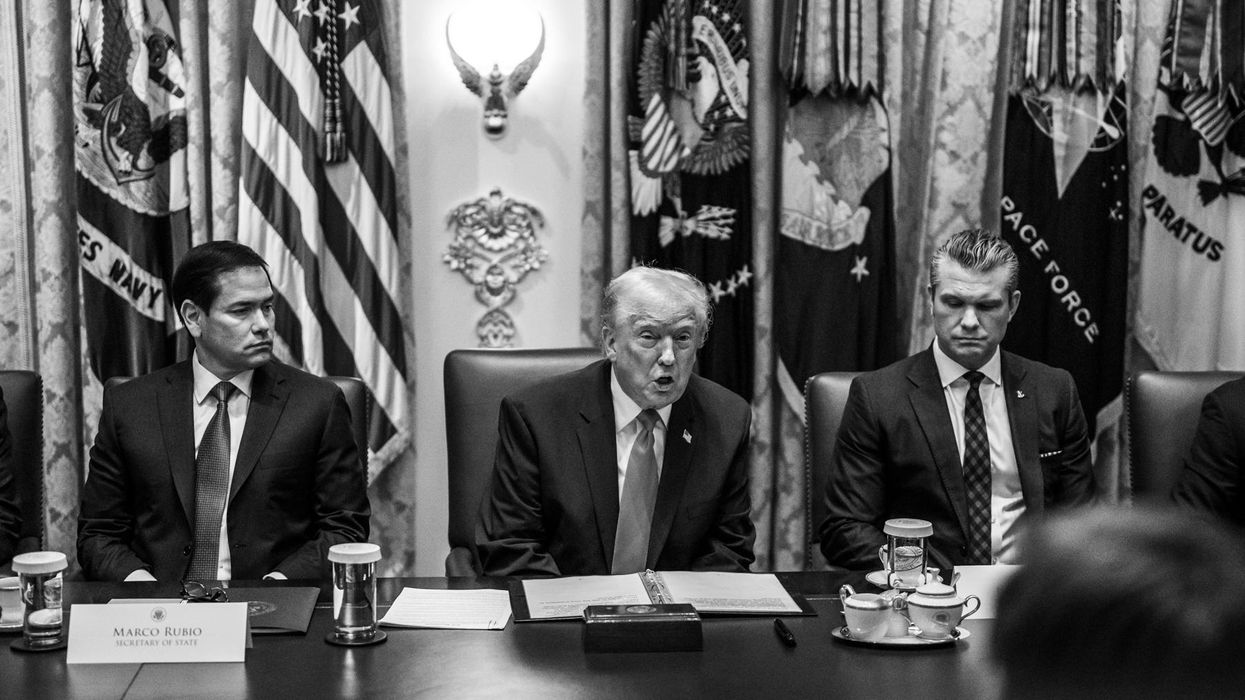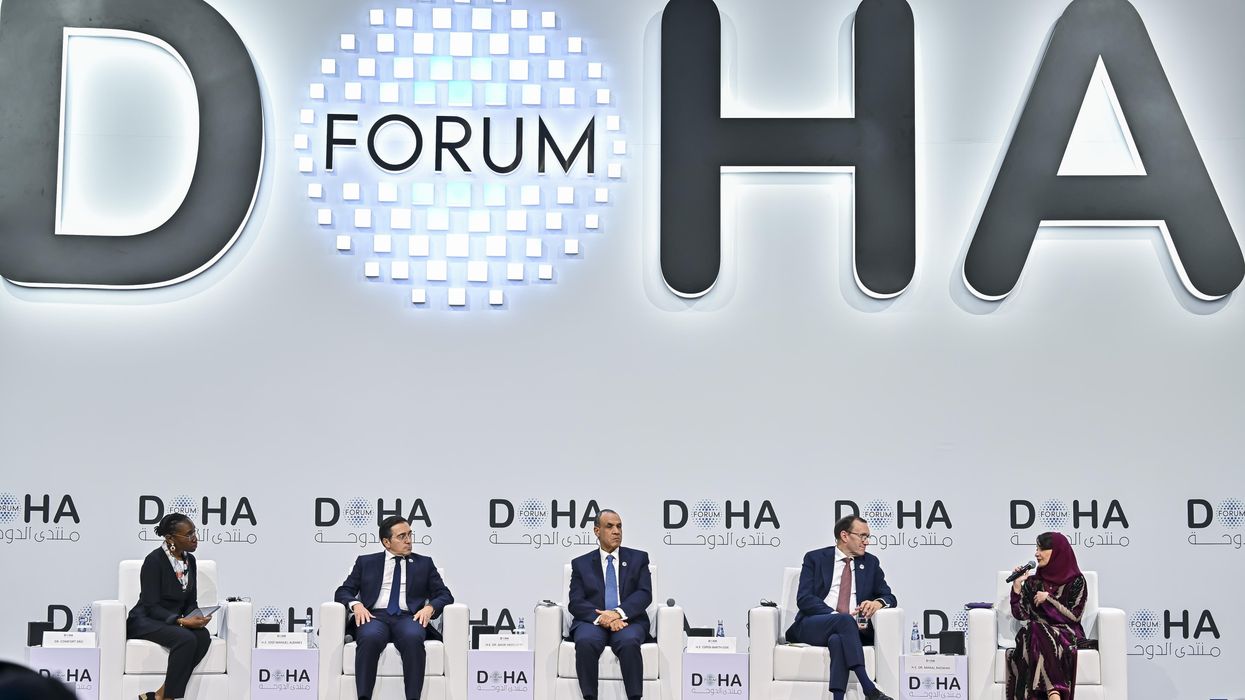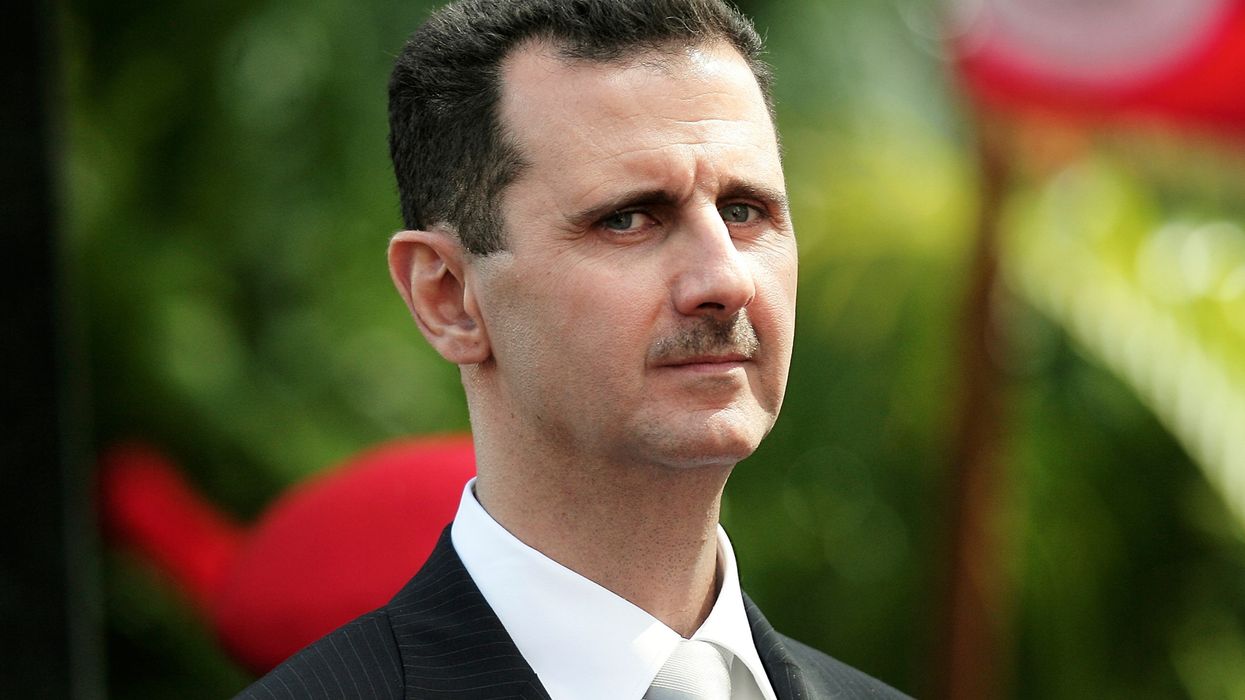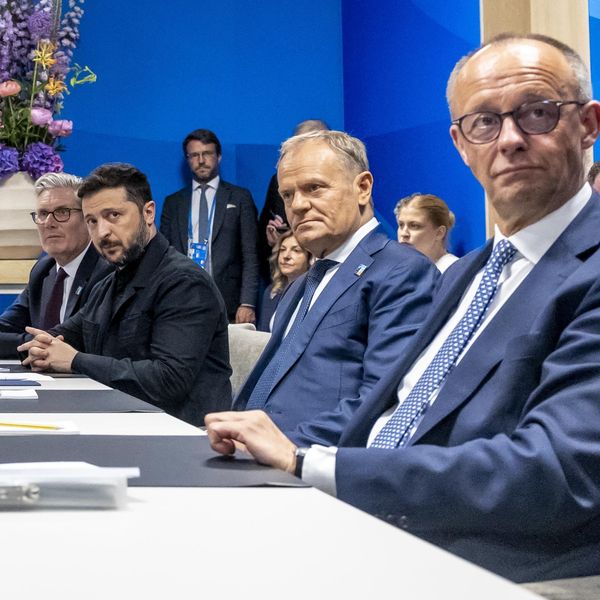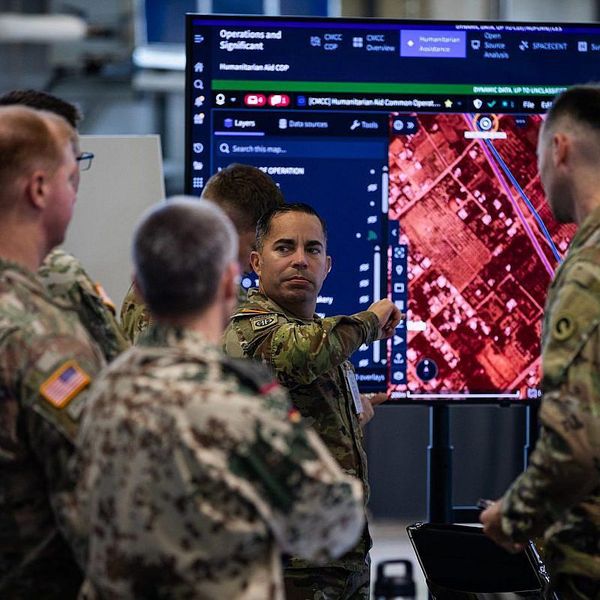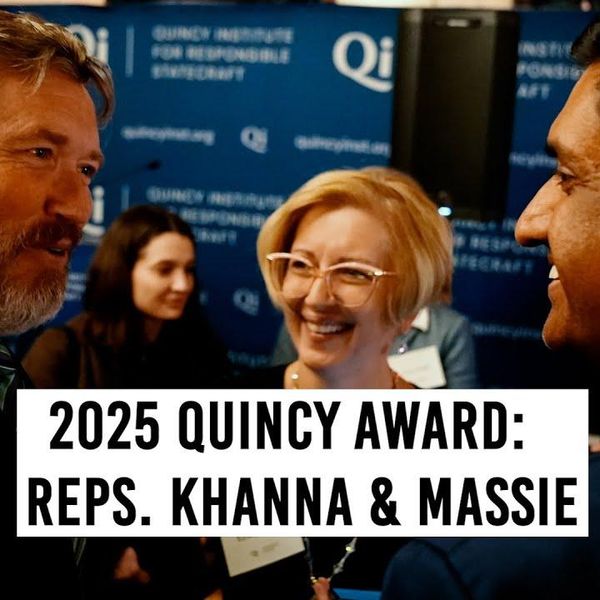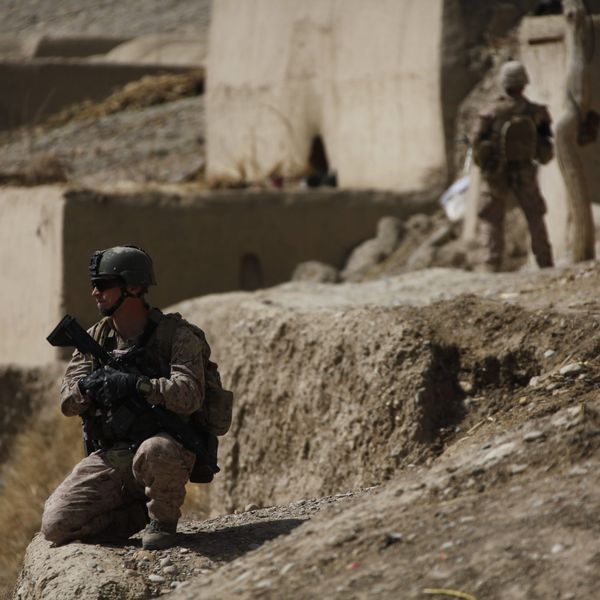Editor's Note, 2/24 6 a.m. EST: Russian President Vladimir Putin announced a "special military operation" against Ukraine Thursday morning local time and his forces have been entering the country and attacking military infrastructure across Ukraine, drawing international condemnation. This is a developing story.
***
There is a growing divide between different hawkish camps over U.S. foreign policy priorities as rising U.S.-Russian tensions over Ukraine threaten to distract Washington from focusing on a neo-containment policy aimed at China.
The split has been most noticeable among Republican analysts, politicians, and former officials as Russian threats and actions against Ukraine have served to catalyze the debate in recent weeks. On one side are the hawks, such as Sen. Josh Hawley and Elbridge Colby, convinced that U.S. attention and resources must be directed to East Asia and the broader “Indo-Pacific” to oppose Chinese power, and on the other are advocates of a more militarized version of the status quo where the United States is expected to oppose and potentially fight Russia and China at the same time.
According to the China hawks, reinforcing European allies is a mistake and a diversion from the most important region in the world given limited resources and manpower. The other camp contends that the United States has to maintain and even increase its military involvement in Europe as well. This group imagines that any constraints on U.S. power should simply be fixed by further expanding the military budget, and they reject the idea that U.S. attention to East Asia must come at the expense of any other region.
The China hawks in this debate have the advantage that they are at least facing up to the realities of the current overstretched U.S. position. They do not assume that U.S. resources and military hardware are limitless, and they are attempting to align U.S. capabilities with what they consider to be America’s most important interests. The “do everything” brigade wants to avoid making difficult tradeoffs by pretending that military spending is “historically low” when it is higher than it has ever been in real terms and by acting as if the last 20 years of costly overreach hadn’t happened.
The Ukraine crisis has exposed the gap between the two camps as the threat of a Russian attack on Ukraine has preoccupied Washington. Earlier this month, Sen. Hawley criticized the Biden administration for continuing to support Ukrainian membership in NATO, arguing that the United States shouldn’t neglect China by adding more commitments in Europe. The Biden administration responded foolishly by accusing Hawley of “parroting Russian talking points.” That wasn’t true, and it missed that Hawley’s real problem with talk of further NATO expansion was that it served as a distraction from what he considered the main rival.
The most explicit case for the Asia First view came in an op-ed by Colby and Oriana Skylar Mastro. They wrote, “The U.S. can no longer afford to spread its military across the world.” Contrary to the credibility hawks that claim that Washington must aid Ukraine to discourage a Chinese attack on Taiwan, they view Ukraine as a distraction from defending Taiwan, which they believe is essential to the U.S. position in Asia. As they put it, “Sending more resources to Europe is the definition of getting distracted.”
The Atlantic Council’s Matt Kroenig has laid out the clearest statement in support of confrontation on multiple fronts with an article that calls for the United States and its allies to “develop a defense strategy capable of deterring and, if necessary, defeating Russia and China at the same time.” A strategy that envisions the United States fighting simultaneous wars against two major nuclear-armed states would put it on a path to ruinous military spending and courting potentially cataclysmic nuclear war. This strategy would take the United States back to the worst days of the early Cold War, except that both would-be adversaries are now nuclear weapons states with substantial arsenals.
Kroenig rejects the idea that U.S. resources are too limited to confront both major powers at once. America, he assures us, “is not compelled to make gut-wrenching strategic choices about its national security due to constrained resources.” He pays lip service to allied burden-sharing but then says in the same breath that “they will not do it on their own if the United States threatens to leave Europe.” The experience of the last 30 years strongly suggests that the only way that allies will take more responsibility for their own security is if they believe the United States will not do it for them. Significantly increasing or even doubling U.S. military spending, as Kroenig proposes, gives allies every incentive to do and spend as little as possible.
John Bolton has written that the “entente” between Russia and China makes it “shortsighted” to reduce U.S. involvement in Europe. Perversely, the closer relationship between Moscow and Beijing that confrontational U.S. policies have nurtured over the last 20 years has now become a common justification for continuing and expanding on those same policies. Bolton also claims that the China-first hawks “ignore” this closer relationship because it is inconvenient for their position, but that is not true. Closer Sino-Russian cooperation isn’t discouraging China hawks from insisting that Washington must focus on only one region. Last week, Colby said, “Alignment between China and Russia actually *increases* the need for prioritizing. If they’re split, we could more plausibly swing forces between theaters over time. If they’re aligned, they’re much more likely to press at the same time. Forces can only be in one place at a time.”
At times the debate has verged on the absurd, as it did when Colby declared John Bolton to be a “dove” on China in response to the latter’s op-ed. This is the same Bolton that just as absurdly called China an “existential threat” in the same piece. Bolton has predictably argued for not reducing the U.S. military footprint anywhere, but it is bizarre to think that this makes him dovish on anything. Bolton is no more a dove on China than Hawley is on Russia, and that points to the larger problem with both camps. While there is real and sometimes heated disagreement between different groups of hawks about where to concentrate U.S. military power, there is no disagreement about the overall U.S. role in the world, the preference for higher military spending, or the desirability of courting conflict with other major powers. No matter which side prevails, the United States stands to be locked into a dangerous course of action.
The China hawks aren’t prepared to make the tradeoffs that their arguments imply, since they aren’t arguing for a reduction in commitments anywhere but are calling only for a reduction of military deployments to Europe at most. The maximalists’ strategy is even more dangerous, since it would have Washington on a collision course with two major rivals in Eurasia when neither rivalry is necessary for securing U.S. vital interests. Neither camp has reckoned with the lack of domestic support for the ever-higher military spending that their plans will require.
The problem confronting the United States is one of too many commitments in too many places. Washington has collected dozens of security commitments over the decades, and in many cases it did so without seriously considering whether honoring them was even practical or worth the potential cost. Until and unless the United States cuts back significantly on its existing security commitments, it will eventually find it difficult to honor even the most important ones.


